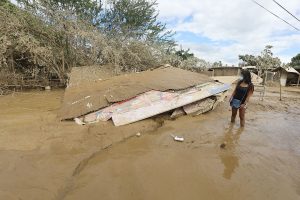THE East Asia and Pacific Region is the second most exposed to climate-related shocks globally, which could push part of its populations to extreme poverty, the World Bank (WB) said.
In a report, the Washington-based bank said the 67.9% of the East Asia and Pacific’s population is exposed to extreme weather events. It found South Asia (88.1%) to be the most exposed.
Less than one-tenth of the East Asia and Pacific population is at high risk to climate shocks, while the Sub-Saharan Africa has the highest share of its population both exposed and at risk to climate shocks (39.2% and 37.3% respectively).
“The pandemic has shown how shocks can have a long-lasting effect on welfare. Shocks are expected to increase with more frequent and severe extreme weather events,” the World Bank said.
The bank also noted that while the global distribution of income has improved since 1990, a large portion of the world’s population lives close to the poverty line. This indicates that moderate shocks can rapidly push people back into extreme poverty, it said.
Nearly one in five people is likely to experience a severe climate shock in their lifetime that they will struggle to recover from, the bank said. These climate-related hazards include floods, heat, drought, and cyclones.
Climate shocks will likely intensify as the three main anthropogenic greenhouse gases — carbon dioxide, methane, and nitrous oxide, trapped 50% more heat in 2022 since 1990, the bank said.
Greenhouse gas emissions, which cause global warming, impact the occurrence and severity of extreme weather events. The bank also noted the slower progress globally in reducing greenhouse gas emissions per unit of growth.
Ending extreme poverty and boosting shared prosperity requires delivering faster and inclusive growth, and increasing protection from climate shocks, according to the World Bank.
Around 8.5% of the global population is living in extreme poverty this year. This also means that 692 million people worldwide live on less than $2.15 per person per day.
Factors that hinder poverty reduction include slow economic growth and shocks such as the COVID-19 pandemic, inflation, and increased conflict and fragility.
The World Bank also noted that the Sustainable Development Goal of ending extreme poverty in all countries by 2030 will not be achieved.
“Between now and 2030, only 69 million people are projected to escape extreme poverty,” the bank said, noting that 7.3% of the global population will live in extreme poverty by the end of the decade.
“If economic growth continues to be slow and inequality remains unchanged, the 3% goal will remain out of reach for decades.”
The multilateral lender classified the Philippines as a “high inequality” economy with a Gini index of 40.7.
The World Bank projects that around 40% of the global population (or more than 3 billion people) will live on less than $6.85 a day, the poverty threshold for middle-income countries. It also noted that less than 20% will have less than $3.65 a day.
“This means that poverty at the higher lines is projected to decline at rates similar to the ones achieved in the beginning of this century, while progress in reducing extreme poverty is slowing significantly,” World Bank said.
“This projection reflects several factors, including differences in where the poor at the various lines live and the associated countries’ projected growth rates over the next half-decade.” — Beatriz Marie D. Cruz

